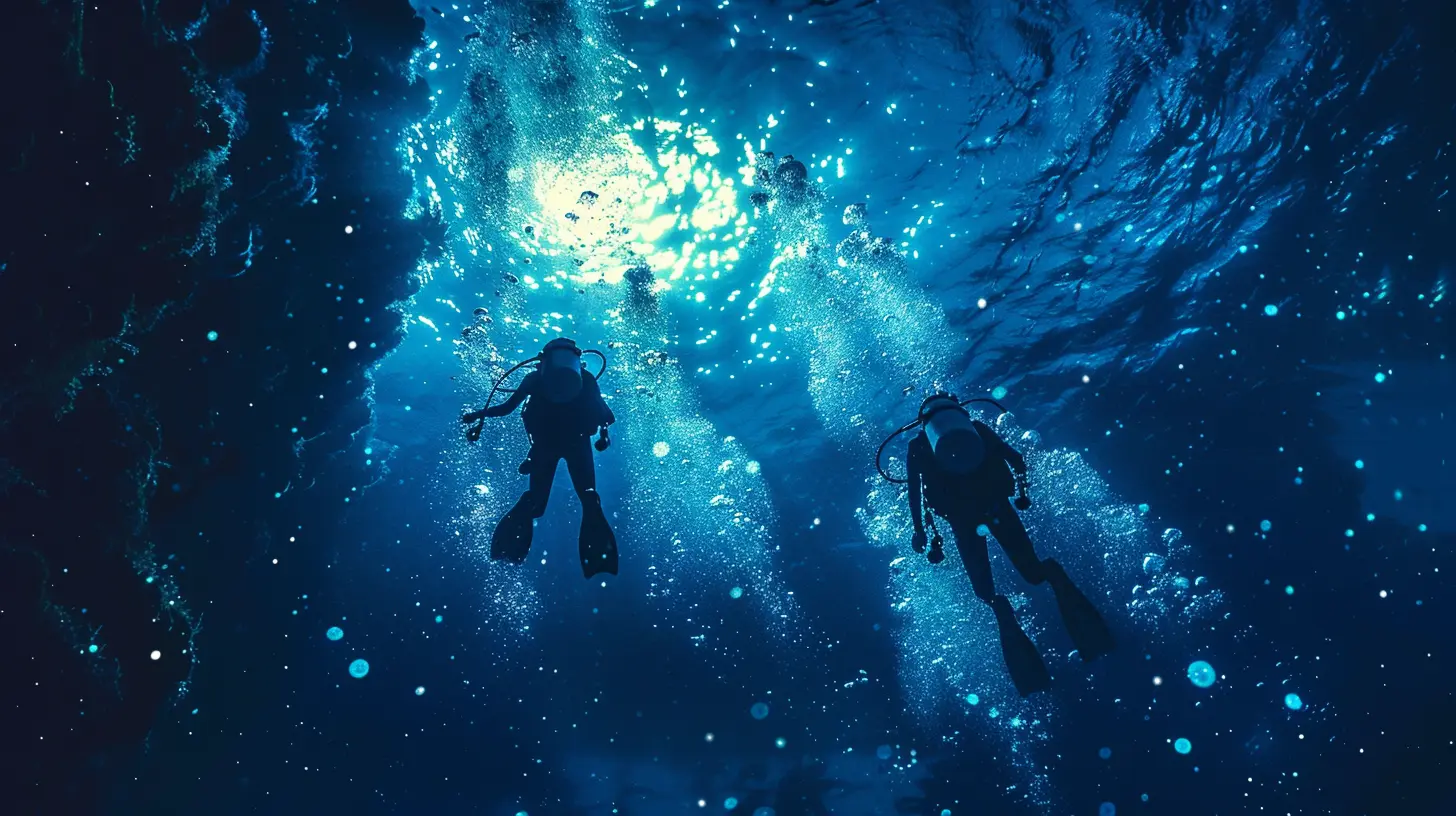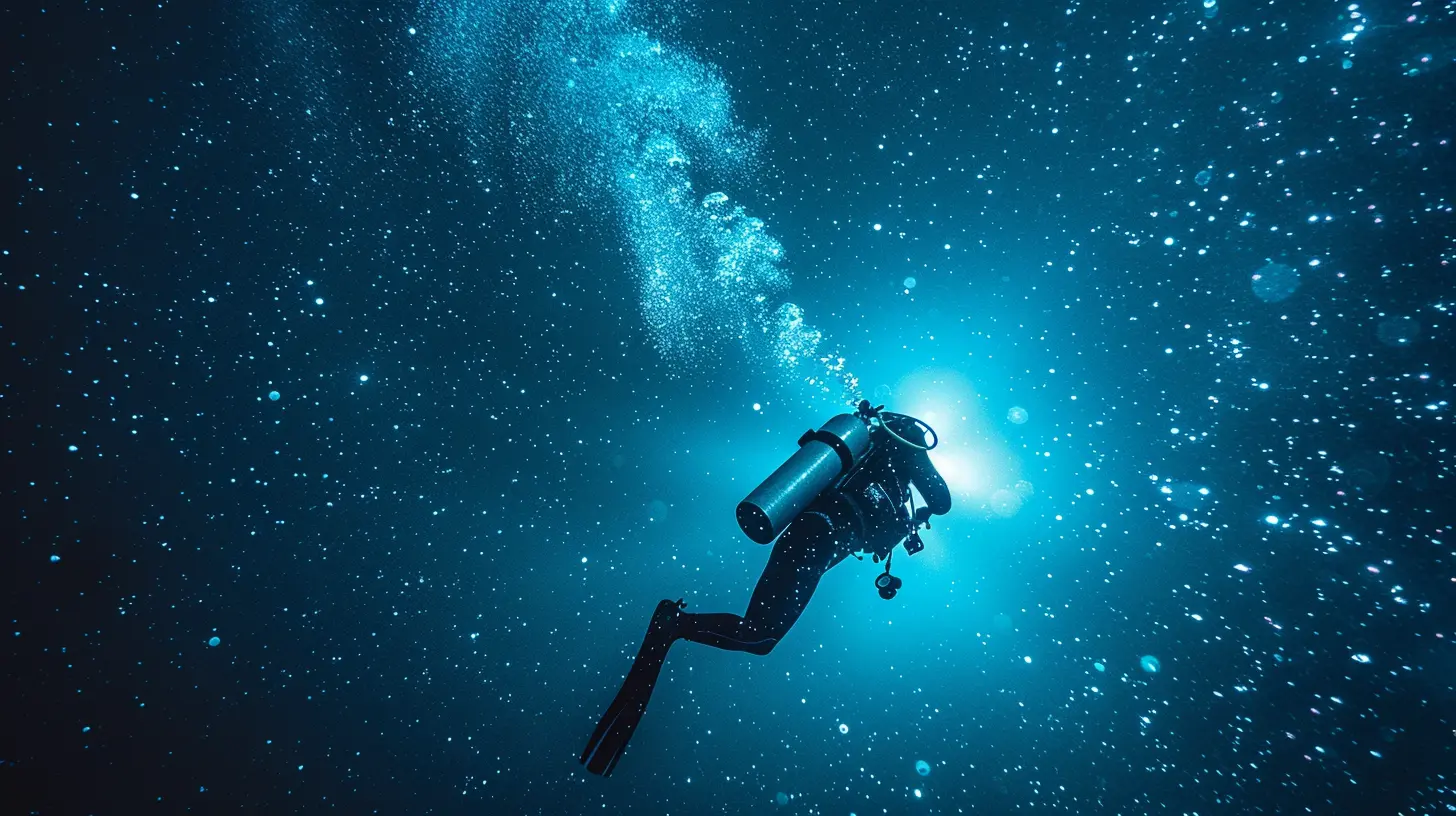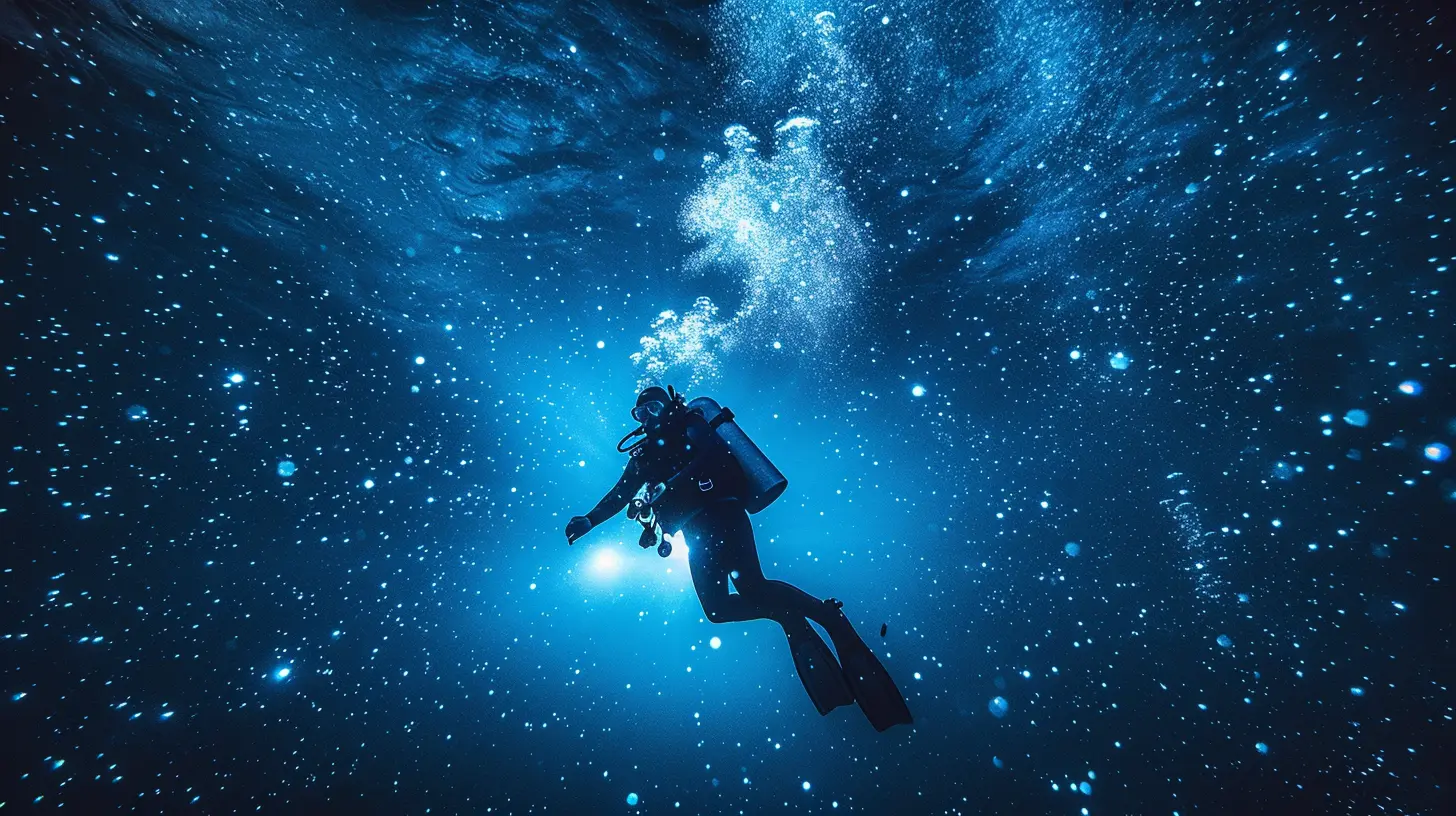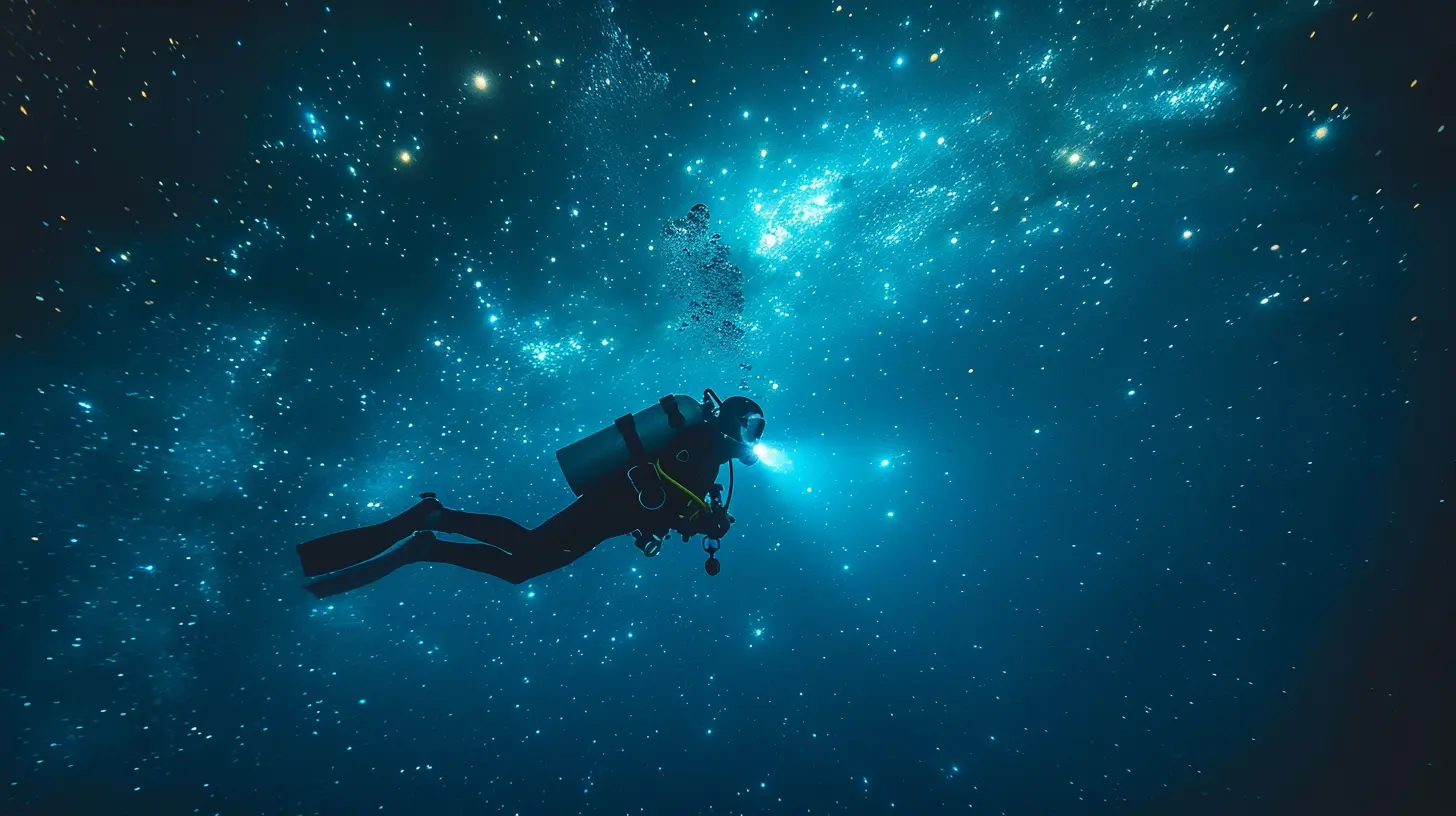Night Diving: Exploring the Ocean Under the Stars
8 August 2025
Have you ever wondered what it’s like underwater when the sun goes down? What if I told you that the ocean completely transforms at night, revealing a mysterious, almost magical world that most people never get to see? That’s exactly what night diving is all about — a surreal journey into the dark waters, lit only by your torch and the shimmering glow of bioluminescent creatures. It’s like walking through the stars but underwater.
If you love scuba diving and you're looking for your next big thrill, night diving should definitely be on your bucket list. It’s not just diving with a flashlight — it’s an entirely different experience. In this post, we’ll dive deep (pun intended) into the amazing world of night diving.
What is Night Diving?
Let’s start from the top. Night diving is scuba diving that takes place after sunset. Unlike daytime dives, where the ocean is bright and teeming with easily spotted fish, night diving offers a front-row seat to the nocturnal side of marine life.By day, the reef bustles with one group of sea creatures; by night, a completely different cast of characters takes over. Think of it as the ocean's version of a night shift, with predators on the prowl and creatures glowing like neon signs.
Why Night Diving is a Must-Try
You might be thinking — “Isn’t it scary going underwater in the dark?” Honestly, it can feel a little daunting at first. But once you take that leap (or splash), you’ll realize it’s more peaceful than anything. In fact, many divers describe it as meditative.Here’s why night diving is totally worth trying:
1. A Whole New World Beneath the Surface
At night, the ocean becomes a different universe. Some animals are only active at night — we’re talking octopuses, lobsters, squid, and moray eels. Some fish change color, and coral polyps (which stay hidden during the day) come alive to feed.It’s like the reef has pressed the refresh button.
2. Bioluminescence: Nature’s Glow Stick
Bioluminescence is one of the coolest phenomena you can witness. Tiny plankton light up when disturbed, creating a trail of light with every movement. Wave your hand and suddenly, it’s like you’re a wizard casting spells in glowing water.It’s rare and unforgettable.
3. Laser Focus
Because visibility is limited to where your torch points, you naturally start seeing more details. You notice textures, patterns, tiny creatures—that you might otherwise miss during day dives. Your senses sharpen, your breathing slows, and it all feels so intimate.4. Serenity and Silence
Without the daylight and busy dive boats, everything just... calms down. It's quiet, the water is still, and you’re one with the ocean. If you’ve ever wanted to feel like you’re the only human in an endless world — this is it.
Is Night Diving Safe?
Absolutely — as long as you’re prepared and follow the rules. Like any activity, it comes with its risks, but night diving isn’t about swimming blind into the dark. You’ll have dive lights, backup lights, and a buddy right by your side.Here are a few safety tips to make your dive smooth and safe:
- Always dive with a buddy (seriously, no solo night diving).
- Bring a primary torch and at least one backup.
- Make sure your dive site is familiar — it's better to night dive somewhere you’ve already explored in daylight.
- Agree on hand signals and light signals with your dive buddy before going under.
- Don’t forget surface markers and glow sticks — they help boats and others know your position.
What Gear Do You Need for Night Diving?
You don’t need a whole new dive shop in your garage, but a few extra items will make your night dive safer and more enjoyable.Dive Light (and a Backup)
This is your new best friend. A good dive torch is crucial. It should have a strong, focused beam to cut through the dark. Many divers also carry a backup light — just in case your main one decides to take the night off.Tank Marker Light
This is a small glow light or LED attached to your tank. It helps your buddy and others keep track of you in the water.Compass
Navigation is trickier at night. A dive compass (especially one that glows in the dark) ensures you don’t drift too far or end up doing underwater loop-de-loops.Signal Devices
Glow sticks or strobes can be placed on the descent line, on your equipment, or even on the surface marker buoy. It’s like setting breadcrumbs, so you can find your way back.Best Places Around the World for Night Diving
If you’re ready to take the plunge — pun intended again, sorry — here are some of the best spots on the planet where night diving really shines.1. Kona, Hawaii – Manta Ray Night Dive
This one’s legendary. You descend near the ocean floor and watch dozens of massive manta rays swirling inches above your head, attracted by lights. It’s choreographed mayhem and completely mesmerizing.2. Bonaire, Caribbean – Fluorescent Night Dives
Some dive shops here offer special UV night dives. With a special blue light and mask filter, the reef glows in psychedelic colors. Imagine diving into a blacklight poster, and you’re halfway there.3. Maldives – Bioluminescent Beaches
Apart from vibrant coral reefs, some Maldives beaches offer nighttime bioluminescence. After your dive, walk along the glowing shore for a double dose of underwater magic.4. Lembeh Strait, Indonesia – Muck Diving at Night
If tiny, bizarre sea creatures are your thing, Lembeh Strait is heaven. Night dives reveal rare critters like bobtail squid, flamboyant cuttlefish, and frogfish.5. Egypt’s Red Sea – Wreck Dives at Night
Night diving amid ancient wrecks adds an eerie excitement. The Thistlegorm, a WWII shipwreck, feels especially surreal under the stars and torchlight.Night Diving Tips for Beginners
Let’s face it — diving in the dark can feel intimidating your first time. But with a few tips, you’ll feel comfortable and confident.1. Start Simple
Choose a shallow dive site with minimal currents and a sandy bottom. Stick to places you’ve already explored in daylight.2. Practice with Your Gear
Before your night dive, get comfortable using your dive light. Learn how to signal with it, and make sure your backup is easily accessible.3. Don’t Go Too Deep
Start with shallow night dives (under 60 feet) to reduce complications and increase your bottom time. The magic happens close to the surface anyway.4. Relax and Enjoy
Your breathing may be tense at first — totally normal. Take slow, deep breaths, focus on the lights, and just take in the moment.What You’ll See on a Night Dive
Every dive is different, but here are some of the usual suspects that pop up after dark:- Octopuses slinking out of crevices
- Lobsters and crabs on the move
- Spanish dancers (a type of sea slug) twirling through the water
- Coral polyps opening up and feeding
- Hunting lionfish and moray eels
- Tiny shrimp reflecting bright red under your torch
- Glowing plankton lighting up when disturbed
It’s like the reef throws a secret party every night, and you’ve got the exclusive invite.
How to Get Started
If all this has you itching to try night diving, here’s what to do next:1. Get Certified – You’ll need at least an Open Water Diver certification. Most dive shops offer specific night diving courses too.
2. Choose Your Dive Shop Wisely – Look for shops that have experienced night diving instructors and solid safety reputations.
3. Book a Night Dive Trip – Start local or plan your next vacation with night diving in mind.
Final Thoughts
Night diving isn’t just a different time to dive — it’s an entirely different experience. It taps into your curiosity, your sense of wonder, even a bit of your courage. It’s quiet, magical, and totally unforgettable.Whether you’re swimming alongside glowing plankton, catching a glimpse of a hunting octopus, or simply floating in the dark listening to your bubbles rise – night diving is one of those rare life experiences that lingers in your memory.
So, are you ready to dive under the stars?
all images in this post were generated using AI tools
Category:
Adventure SportsAuthor:

Tracie McAdams
Discussion
rate this article
2 comments
Loretta Jimenez
Night diving is like a cosmic dance with the ocean! 🐠✨ Imagine gliding through the water while stars twinkle above, and bioluminescent critters put on a dazzling light show. If you're seeking an adventure that’s out of this world, dive into the night! 🌌🌊
November 14, 2025 at 5:13 PM

Tracie McAdams
Thank you! Night diving truly is a magical experience that reveals the ocean’s hidden wonders! 🌊✨
Morrow Shaffer
Unforgettable experience, nature's beauty at night!
August 16, 2025 at 5:06 PM

Tracie McAdams
Thank you! Night diving truly reveals a magical side of nature that’s hard to forget.


